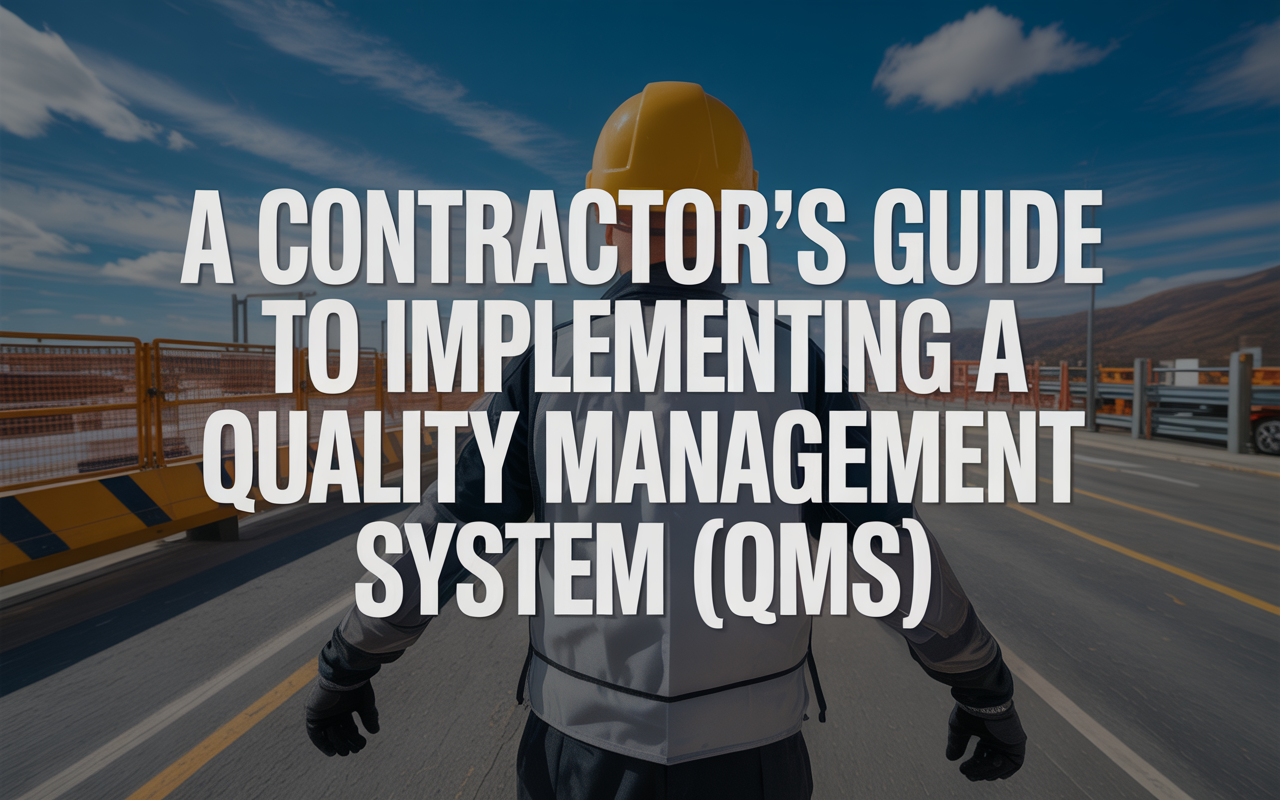Reducing Downtime: Best Practices for Maintenance Management in Utilities
In the utilities sector, minimizing downtime isn’t just a goal-it’s a necessity. Every minute of downtime can lead to lost revenue, unhappy customers, and even regulatory fines. Efficient maintenance management plays a critical role in ensuring reliability, staying compliant, and keeping costs under control. With advancements in technology and evolving industry trends, utilities are discovering smarter ways to tackle these challenges head-on. In this article, we’ll explore key strategies like predictive maintenance, IoT integration, and sustainability practices that are shaping the future of utility maintenance in 2025. 🌟
As utilities face increasing pressure to deliver uninterrupted service, adopting modern maintenance practices becomes non-negotiable. The shift from outdated methods to innovative solutions is transforming how utilities operate. From leveraging data analytics to implementing cutting-edge tools like Nektar.io, organizations are finding new ways to reduce downtime while improving efficiency. Let’s dive into the details of what downtime means for utilities and how proactive strategies are making all the difference. 🔧💡
Understanding Downtime in Utilities
Downtime in the utilities sector refers to any period when equipment or systems are unavailable, whether due to planned maintenance or unexpected failures. Planned downtime might include routine inspections or upgrades, while unplanned downtime often stems from equipment malfunctions, natural disasters, or human error. Both types disrupt operations, but unplanned downtime tends to have more severe consequences, including financial losses and reputational damage. Understanding the causes and impacts of downtime is the first step toward mitigating its effects. 🚧
The business implications of downtime in utilities are significant. For example, power outages can inconvenience thousands of customers, leading to complaints and potential penalties. Regulatory bodies may also impose fines if compliance standards aren’t met. Beyond the immediate impacts, prolonged downtime can strain customer trust and hurt long-term profitability. Clearly, addressing downtime requires a strategic approach that balances operational needs with regulatory demands. This sets the stage for exploring how utilities can transition from reactive fixes to proactive solutions. ⚡️
The Shift from Reactive to Proactive Maintenance
Traditionally, many utilities relied on reactive maintenance-waiting for something to break before fixing it. While this approach might seem cost-effective at first glance, it often leads to higher expenses due to emergency repairs and extended downtime. Today, utilities are moving toward proactive and predictive maintenance strategies, which focus on preventing issues before they occur. This shift not only reduces downtime but also extends the lifespan of critical assets, saving money in the long run. 🔄
Proactive maintenance is essential because it minimizes risks associated with unexpected failures. Relyých solely on reactive strategies can leave utilities vulnerable to catastrophic breakdowns, especially as infrastructure ages. By adopting technologies like predictive analytics and condition monitoring, utilities can anticipate problems and address them early. This forward-thinking mindset ensures smoother operations and positions utilities to meet the growing demands of modern consumers. Now, let’s explore how asset inventory and condition monitoring lay the foundation for effective maintenance programs. 📊🛠️
Asset Inventory and Condition Monitoring
At the heart of every successful maintenance strategy lies a comprehensive asset inventory. Knowing exactly what equipment you have, where it’s located, and its current condition is crucial for planning targeted maintenance activities. Regular condition monitoring takes this a step further by providing real-time insights into asset performance. Together, these practices help utilities prioritize maintenance tasks, avoid unnecessary repairs, and stay compliant with industry regulations. 🔍📋
“Maintenance management in 2025 is less about reactive fixes and more about proactive strategies. We’ll explore key trends redefining maintenance, from predictive technologies to sustainability.”-Micromain
Beyond compliance, maintaining accurate asset records enables utilities to implement predictive maintenance programs effectively. When you understand the health of your assets, scheduling timely interventions becomes much easier. This not only reduces unplanned downtime but also optimizes resource allocation. As we’ll see next, combining asset data with advanced technologies like IoT sensors and AI can take maintenance management to the next level. Stay tuned to learn how predictive maintenance is revolutionizing the utilities sector. 🤖📡
Leveraging Predictive Maintenance and IoT
Predictive maintenance is changing the game for utilities by using IoT sensors and data analytics to monitor equipment in real time. These sensors collect vast amounts of data about temperature, vibration, pressure, and other factors, allowing utilities to detect anomalies before they escalate into failures. By analyzing this data, teams can predict when a piece of equipment is likely to fail and schedule maintenance accordingly. This approach drastically cuts down on unplanned downtime and keeps operations running smoothly. 📈⚙️
“A comprehensive asset inventory entails detailed documentation… These records provide managers with invaluable insights.”-Mapcon
One of the biggest advantages of predictive maintenance is its ability to optimize resource use. Instead of performing blanket maintenance on all assets, utilities can focus their efforts where they’re needed most. This saves time, labor, and materials while extending the life of critical infrastructure. Additionally, integrating IoT with centralized platforms like Nektar.io makes it easier to manage workflows and share insights across departments. Such innovations are proving indispensable for utilities aiming to stay competitive and reliable in today’s fast-paced world. 💻🌐
Looking ahead, the adoption of predictive maintenance will continue to grow as more utilities recognize its value. Not only does it reduce downtime, but it also enhances decision-making and fosters a culture of continuous improvement. The combination of IoT and predictive analytics represents a powerful toolset for utilities striving to achieve operational excellence. Next, we’ll examine how artificial intelligence and machine learning further enhance these capabilities. 🚀🧠
“Predictive maintenance is quickly becoming the cornerstone of modern field service management, especially for utilities managing critical infrastructure.”-EnSightPlus
Integrating AI and Machine Learning in Maintenance Management
Artificial intelligence (AI) and machine learning (ML) are transforming maintenance management by enabling utilities to analyze massive datasets quickly and accurately. These technologies identify patterns that humans might miss, helping predict failures and optimize maintenance schedules. For instance, AI algorithms can process historical maintenance data alongside real-time sensor inputs to recommend the best times for servicing specific assets. This level of precision ensures resources are used efficiently and downtime is minimized. 🤖📊
AI/ML also empowers utilities to make smarter decisions by providing actionable insights. For example, machine learning models can flag unusual behavior in equipment months before an actual failure occurs. This gives maintenance teams ample time to plan and execute repairs without disrupting service. By embracing AI-driven tools, utilities can not only reduce downtime but also improve overall system reliability. As we move forward, let’s discuss how implementing a Computerized Maintenance Management System (CMMS) ties everything together. 💪🔗
“Artificial intelligence (AI) and machine learning (ML) will transform maintenance management by 2025. These technologies empower systems to learn from massive datasets.”-Micromain
Implementing a Computerized Maintenance Management System (CMMS)
A Computerized Maintenance Management System (CMMS) is a game-changer for utilities looking to streamline their maintenance processes. Unlike spreadsheets or manual tracking methods, a CMMS centralizes all asset data, work orders, and preventive maintenance schedules in one place. This eliminates confusion, reduces errors, and ensures everyone has access to up-to-date information. With features like automated reminders and reporting tools, a CMMS helps utilities stay organized and efficient. 🖥️📄

Moreover, a CMMS integrates seamlessly with predictive maintenance technologies, creating a cohesive ecosystem for managing utility assets. For example, when IoT sensors detect an issue, the CMMS can automatically generate a work order and assign it to the appropriate team member. This level of automation saves time and improves response times, ultimately reducing downtime. To truly harness the power of modern maintenance practices, utilities must invest in robust CMMS solutions like those offered by Nektar.io. Speaking of investments, let’s explore how sustainability and regulatory compliance factor into maintenance management. 🌱📜
“Invest in a quality CMMS. This organizes existing operations by centralizing asset data, work orders, and preventive maintenance schedules.”-Mapcon
Prioritizing Sustainability and Regulatory Compliance
Maintenance management in utilities is increasingly intertwined with sustainability initiatives. Energy-efficient upgrades, resource optimization, and renewable energy integration not only reduce environmental impact but also lower operational costs. By incorporating sustainable practices into maintenance routines, utilities can align with global green goals while enhancing their bottom line. For instance, upgrading to high-efficiency motors or LED lighting can significantly cut energy consumption, benefiting both the planet and the utility’s budget. 🌍💡
Regulatory compliance adds another layer of complexity to maintenance management. Utilities must adhere to strict guidelines to avoid fines and maintain public trust. A well-structured maintenance strategy ensures that inspections, documentation, and reporting requirements are consistently met. By leveraging tools like CMMS and IoT, utilities can simplify compliance processes and demonstrate their commitment to responsible operations. Now, let’s turn our attention to innovations in field service management that are reshaping utility workflows. 🚧🔧
“Best practices include conducting energy efficiency audits, upgrading to LED lighting and high-efficiency HVAC systems, and pursuing green building certifications. Integrating renewable energy sources can also reduce long-term utility costs and environmental impact.”-Gordian
Field Service Management Innovations for Utilities
Field service management (FSM) is undergoing a transformation thanks to mobile workforces, cloud-based coordination, and automated dispatching. These innovations allow utilities to respond faster to emergencies, allocate resources more efficiently, and minimize downtime. For example, cloud-based FSM platforms enable technicians to access work orders, update job statuses, and communicate with headquarters from anywhere. This flexibility ensures that field teams can focus on getting the job done rather than dealing with administrative hurdles. 📱🌐
Automation is another key trend driving FSM innovation. Automated dispatching systems use AI to assign jobs based on technician availability, skillset, and proximity to the site. This reduces travel time and ensures the right person is sent to the right job. Combined with real-time data from IoT sensors, these advancements empower utilities to provide faster, more reliable service. As we consider the human element of maintenance, let’s explore the importance of building a skilled workforce and fostering a proactive maintenance culture. 👷♂️💪
“Artificial intelligence (AI) and machine learning (ML) are transforming the way field services are managed. For utilities and municipalities, these technologies help streamline dispatching and improve resource allocation.”-EnSightPlus
Building a Maintenance Culture and Skilled Workforce
A proactive maintenance culture starts with people. Continuous training and skill development ensure that staff are equipped to handle new technologies and methodologies. Whether it’s learning how to interpret IoT data or mastering the latest CMMS software, investing in employees pays dividends in the form of improved efficiency and reduced downtime. Engaged and knowledgeable workers are the backbone of any successful maintenance program. 🎓👩💻
Beyond technical skills, fostering a mindset of continuous improvement is equally important. When employees understand the value of proactive maintenance and feel empowered to contribute ideas, they become active participants in reducing downtime. Leadership plays a crucial role here by setting clear expectations, providing resources, and recognizing achievements. A strong maintenance culture, supported by ongoing education, ensures that utilities remain resilient in the face of evolving challenges. Next, we’ll look at how data collection and performance metrics support these efforts. 📊🎯
Continuous Data Collection and Performance Metrics
Collecting and analyzing maintenance data is vital for understanding what’s working and what needs improvement. Historical data provides context for identifying trends, while real-time metrics offer immediate insights into current performance. Key indicators like mean time to repair (MTTR), mean time between failures (MTBF), and overall equipment effectiveness (OEE) help utilities measure their progress and make informed decisions. Tracking these metrics ensures that maintenance strategies remain effective and aligned with organizational goals. 📉📈
Data-driven decision-making doesn’t stop at internal evaluations. Demonstrating ROI to stakeholders often requires presenting hard numbers that prove the value of maintenance investments. By consistently collecting and analyzing performance data, utilities can build compelling cases for adopting new technologies or expanding existing programs. This practice creates a feedback loop that drives continuous improvement and reinforces the importance of proactive maintenance. However, reducing downtime isn’t without its challenges. Let’s explore some common barriers and how to overcome them. 🚧💡
Barriers to Reducing Downtime and How to Overcome Them
Utilities face several obstacles when trying to reduce downtime, including aging infrastructure, limited budgets, and resistance to change. Aging equipment is prone to frequent breakdowns, while tight budgets can delay necessary upgrades. Additionally, some organizations struggle to adopt new technologies due to fear of disruption or lack of leadership support. These barriers can seem daunting, but they’re not insurmountable. 🏭💰

To overcome these challenges, utilities should adopt a phased approach to technology implementation, starting with pilot projects to demonstrate value. Securing leadership buy-in and fostering cross-department collaboration are also critical for success. By breaking down silos and encouraging open communication, teams can work together to find creative solutions. Addressing these barriers head-on sets the stage for a brighter future. Speaking of the future, let’s take a look at emerging trends that will shape maintenance management in the years to come. 🚀🔮
Future Trends: What’s Next for Maintenance Management in Utilities?
Looking ahead, digital twins, enhanced AI integration, and stricter regulatory pressures are set to redefine maintenance management in utilities. Digital twins create virtual replicas of physical assets, allowing utilities to simulate scenarios and test solutions without risking actual equipment. Meanwhile, deeper AI integration will unlock even more sophisticated predictive capabilities, enabling utilities to anticipate issues with unprecedented accuracy. These advancements promise to further reduce downtime and boost operational efficiency. 🌐🤖
Regulatory pressures will also play a significant role in shaping the future landscape. As governments push for greener, more sustainable practices, utilities will need to adapt their maintenance strategies accordingly. Investing in smart technologies and sustainable solutions will be key to staying compliant and competitive. By embracing these trends, utilities can position themselves for long-term success. Before wrapping up, let’s address some frequently asked questions about reducing downtime and maintenance management. ❓📚
FAQ: Common Questions on Reducing Downtime and Maintenance Management
What is the best first step to reduce downtime in a utility organization?
The best first step is conducting a full asset inventory and assessment. Understanding what assets you have, their condition, and their criticality allows you to prioritize maintenance activities effectively. This foundational step ensures that resources are allocated wisely and lays the groundwork for implementing advanced strategies. 📋🔍
How does predictive maintenance differ from preventive maintenance?
Predictive maintenance relies on real-time data and analytics to anticipate failures, while preventive maintenance follows a fixed schedule regardless of asset condition. Predictive approaches are more precise and cost-effective, as they target specific issues rather than applying blanket fixes. This distinction highlights the value of data-driven decision-making. 📊⏰
Can small or municipal utilities afford advanced maintenance technologies?
Absolutely! Many advanced maintenance technologies offer scalable solutions tailored to smaller budgets. While upfront costs may seem high, the long-term ROI-through reduced downtime and extended asset life-makes these investments worthwhile for even small or municipal utilities. Starting small and scaling up is a practical approach. 💸🌱
How does maintenance management contribute to regulatory compliance?
Maintenance management supports compliance by ensuring proper recordkeeping, scheduling regular inspections, and maintaining detailed documentation. These practices demonstrate adherence to regulatory standards and help utilities avoid costly fines. A well-organized system simplifies compliance efforts significantly. 📑🔒
What are key metrics for evaluating maintenance effectiveness and downtime reduction?
Key metrics include mean time to repair (MTTR), mean time between failures (MTBF), and overall equipment effectiveness (OEE). MTTR measures how quickly issues are resolved, MTBF tracks reliability, and OEE evaluates productivity. Together, these indicators provide a comprehensive view of maintenance performance. 📏📈
Conclusion
Adopt microcontent



